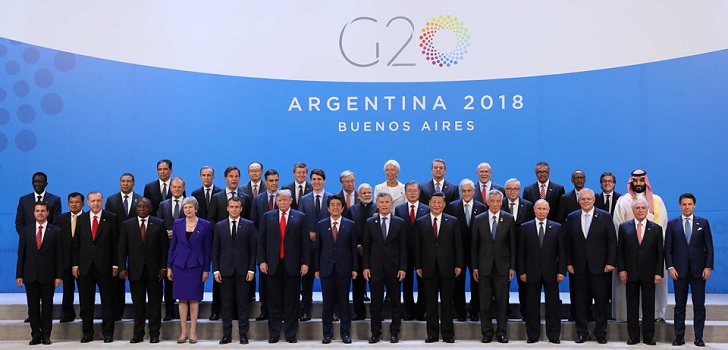Which role will fashion play at the G20 summit?
The leaders of the most developed countries will hold meetings this Friday and tomorrow in the Japanese city of Osaka, with an eye on the trade war between Donald Trump and Xi Jinping.

Fashion, listening closely to the G20 summit. The nineteen largest economies in the world, in addition to the European Union, are meeting from this Friday in Japan with the question of the trade war that China and the United States, which is on the spotlight. US President Donald Trump, who arrives at this summit with a belligerent attitude and after threats to raise tariffs to Chinese commerce, will sit down again with his opponent Xi Jinping. The resolution of the summit will depend on whether the current degree of uncertainty in the global economic scenario will increase or decrease, which will mark the future of international trade.
The current situation between China and the United States is at a dead end and tension continues to rise. The latest decision by Donald Trump was to raise tariffs on imports of products from China by 25% last May, but the US president hinted a few weeks before the G20 that it could further increase restrictions on Chinese trade, raising 100,000 million dollars the current tariff figure. The answer from China was quite resounding: the government spokesman, Gao Feng, warned that they would fight to the end in the trade war that his country maintains with the United States.
Trump and Xi Jinping will meet face to face in Osaka from today, and G20 leaders are expected to talk about the development of international trade over the weekend. But fashion is not only in the spotlight between China and the United States, as there are more open conflicts that fully affect the sector.
Fashion is played at the summit of the G20 in the midst of the trade war between China and the United States
Mexico, also present at the summit, also suffered threats of tariff increases by the US president. The reason of the threats was on Trump to impose forceful measures against the migratory flow to the United States from Guatemala, which inevitably makes its way through Mexico. The announcement of sharp actions against immigration by the Mexican government relaxed Trump's threatening positions against trade between the two countries.
The fashion and textile sector saw recently how a possible fire in free trade in North America was extinguished. Mexico, the United States and Canada, all three present at the G20 summit in Osaka, signed an agreement to approve the Usmca, the new free trade agreement between the three countries that replaces the old Nafta, questioned by the president of the United States. While Canada and the United States still do not ratify the pact, the three leaders are again facing each other, with the fashion sector on the lookout.
Free trade, with fashion on the horizon, also has other prominent actors who will pass through Osaka during the weekend. This is the case of India, whose president, Narendra Modi, has studied a possible increase in the minimum wage in his country, which would affect the Indian textile industry. Modi's nod to labor rights could harm the competitiveness of his country against other manufacturers such as Bangladesh or Ethiopia, which has entered strongly in this scenario.
India, Japan, Mexico and Canada are also very important in the development of the international fashion business
The host country, Japan, has also taken a very important role in the development of free trade around the world. After putting the heading to a free trade agreement with the European Union, which eliminated the tariff charges on textile items and clothing, the leader of the Japanese country can execute a role of moderator between China and the United States, given its interest in maintaining a good international climate to safeguard its exports.
With the focus on the future of free trade, with Trump threatening Vietnam to be the next victim of its tariff hikes, fashion is waiting for what the G20 leaders can negotiate. The commitment to the continuity of the current model of free trade and the promotion or, on the contrary, the backward step and the total rupture between China and the United States, can evolve into an unprecedented situation for the free trade of the business of fashion.
Beyond that, among the issues that concern the textile and fashion sector, such as global economy and trade and investment, the G20 leaders will also discuss issues related to innovation, environment, energy and work at the summit.


info@themds.com
Validation policy for comments:
MDS does not perform prior verification for the publication of comments. However, to prevent anonymous comments from affecting the rights of third parties without the ability to reply, all comments require a valid email address, which won’t be visible or shared.
Enter your name and email address to be able to comment on this news: once you click on the link you will find within your verification email, your comment will be published.